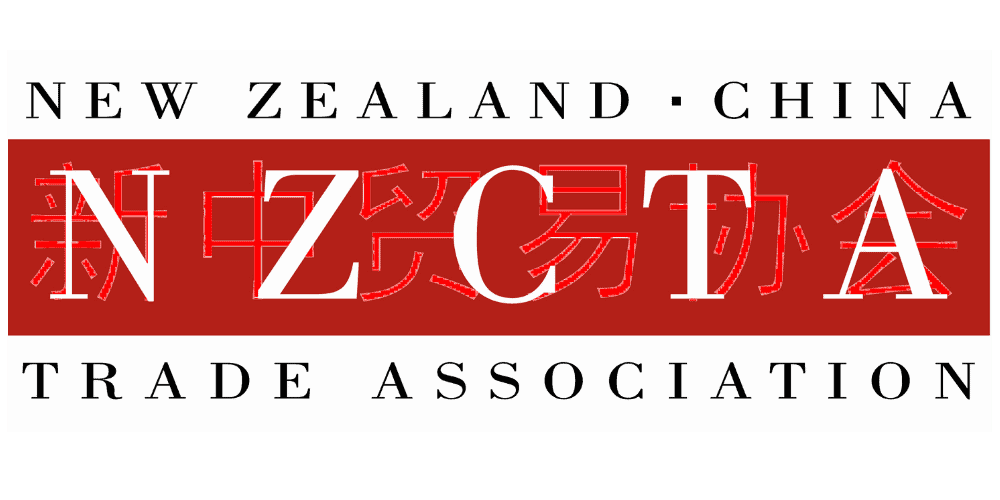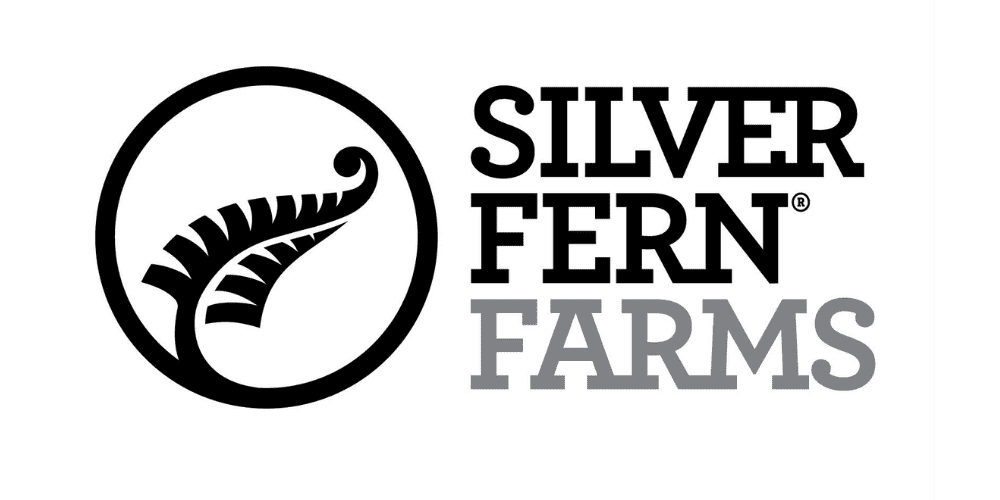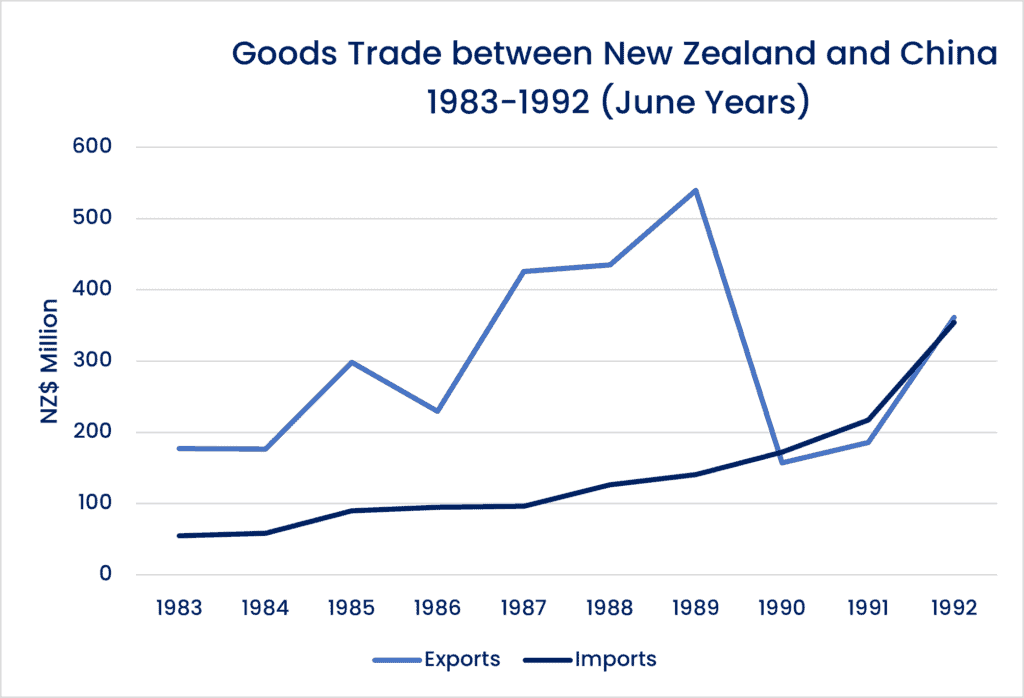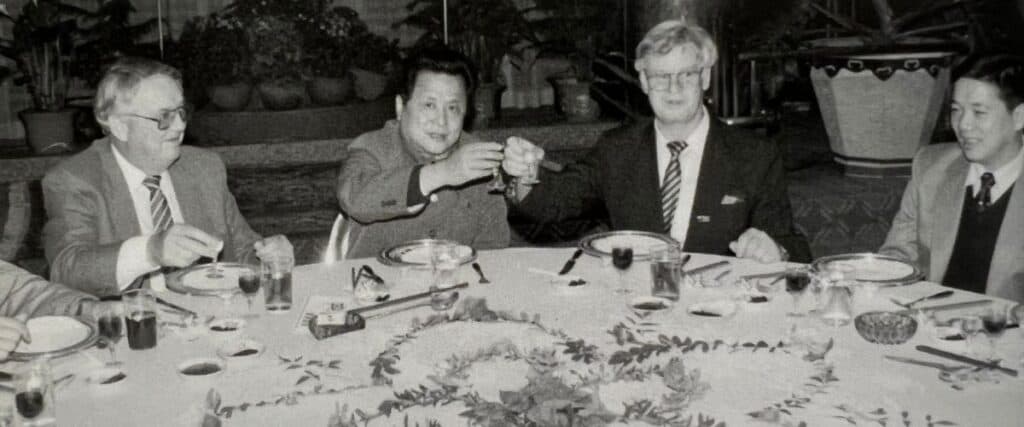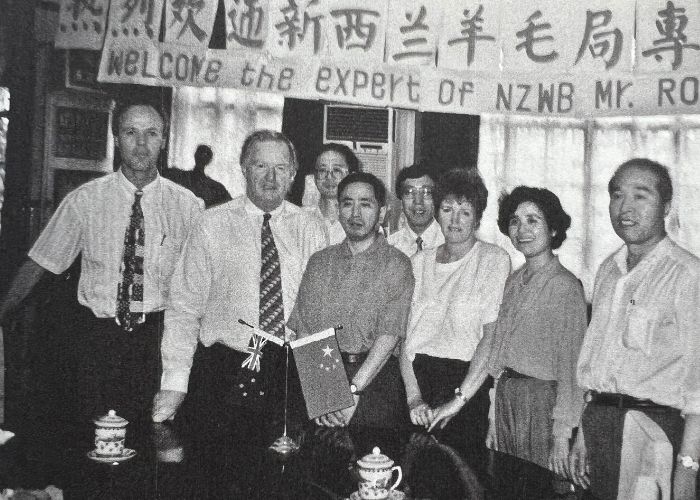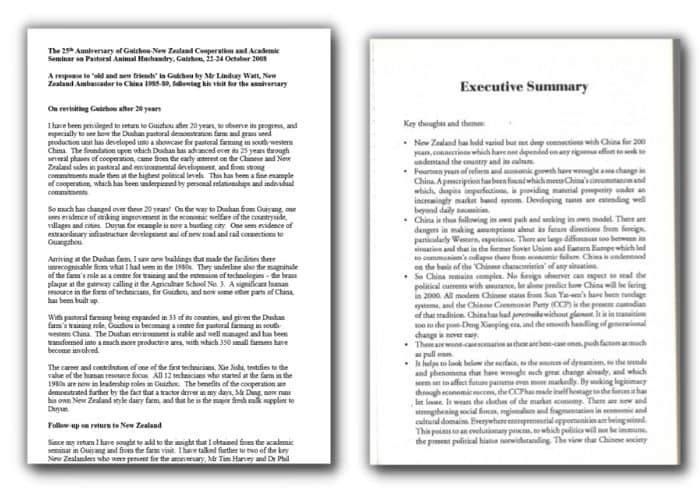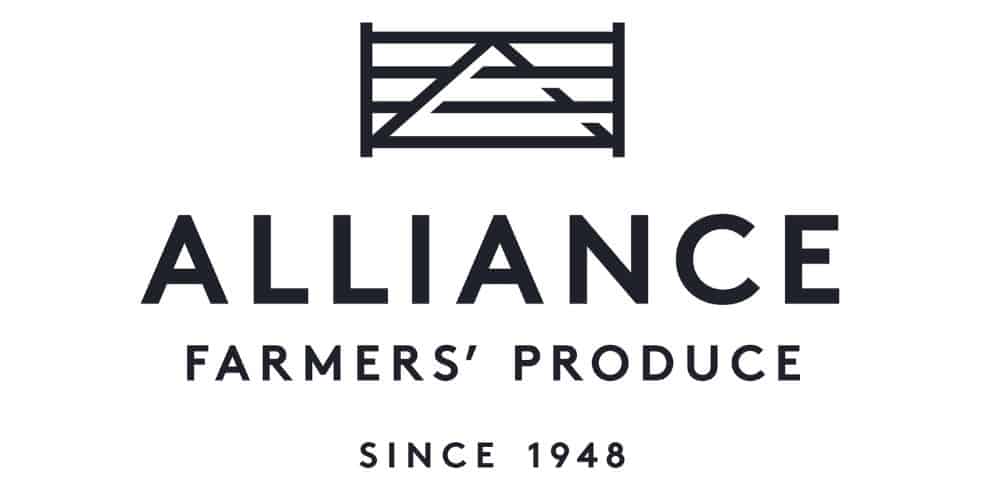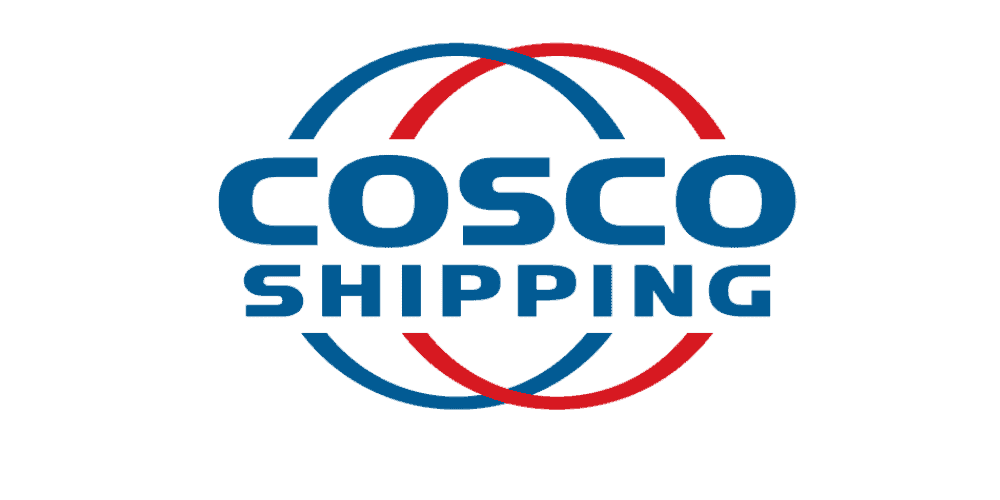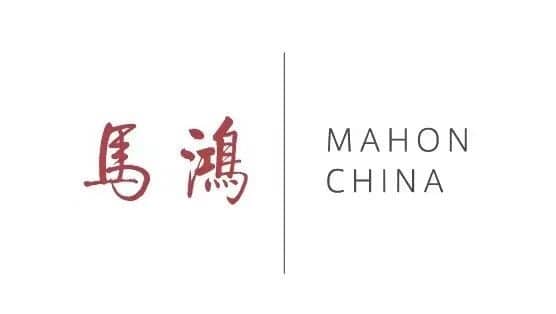Official visits and the development of relations between New Zealand and China were interrupted by the Tiananmen Square demonstrations in Beijing that began on 15 April and ended on 4 June, 1989. The impact on New Zealand’s exports was significant but imports from China continued to rise.
New Zealand along with other countries raised concerns over the events of June 1989 but resumed visits and official consultations with China as early as March 1990. While imports continued to grow, exports stuttered at below pre-Tiananmen levels in the face of economic contractions in the Chinese domestic market and fell markedly when the wool market collapsed in 1990-91.
Throughout the decade, New Zealand companies involved in the agricultural/horticultural and related sectors continued their forays into the market – off the back of China’s focus on their own agricultural development.
Chinese Vice Premier Li Xiannian noted following a visit to New Zealand in the early 1980’s that China “needs to borrow from New Zealand to develop these mountainous and hill areas”. He was referring to what effectively became a technology transfer through the establishment of model farms in the provinces of Guizhou, Shanxi and Guanxi.
The farm – Agriculture School No 3 – at Dushan in Guizhou was visited by Lindsay Watt, New Zealand Ambassador to China (1985-89) in October, 2008 when an academic seminar on Pastoral Animal Husbandry was held there to celebrate the 25th anniversary of the farm’s establishment (in 1983)
He reported new buildings that made the facilities unrecognisable from what he had seen in the 1980s. “They underline the magnitude of the farm’s role as a centre for training and the extension of technologies. With pastoral farming being expanded in 33 of its Counties, and given the Dushan farm’s training role, Guizhou is becoming a centre for pastoral training in south-western China”. He found the Dushan environment stable and well managed with 350 small farmers involved. All 12 technicians who started at the farm in the early 1980s were by 2008 in leadership roles throughout the province.9
Pyne Gould Guiness International and David Wallace of Hamilton supplied pregnant heifers, and cattle, sheep and goats to China, Yates introduced Pumpkin seeds to the Farm Bureau and Broccoli (not well known in China at the time) to horticulturalists in Tianjin.10
Cereals, Oils and Food Corporation in Beijing advised Vic Percival that the provincial administrators in Inner Mongolia wanted Abattoirs. New Zealand came highly recommended as a quality supplier and Percival approached McConnell Dowell (who built slaughter houses and cool storage facilities). Negotiations started well but faltered due to foreign exchange restrictions on the Chinese side and a reluctance by the NZ company to become involved in barter trade and the venture ended.11
There was a more successful outcome involving Fisher and Paykel. In 1984 – Percival approached Don Rowlands from Fisher and Paykel about an opportunity to supply an order of refrigerators and freezers to Tianjin, but the volume required was too big at the time. Fisher and Paykel thought, however, that it might be able to supply a refrigerator assembly line that was being replaced with a new unit. Following support from Chinese government Ministers and further negotiations on a different location from Tianjin, the plant was transported to a local manufacturing facility in Jiaxing opening in May 1987 with a production capacity of 600 refrigerators a day.12
A feature of trade in this decade was the development over six years from 1984 by Vic Percival and Howard Scott of sales from a compound in New Zealand iron sand to China’s largest steel mill at Baoshan, northwest of Shanghai. Contracts involving Japanese agents, Chinese state corporations and NZ Steel executives required a “long march” embracing political complexities, translation problems between English, Japanese and Chinese scripts of technical information, and extreme patience. The compound, titanomagnetite, is used as an additive in the steel making process. It enhances the life of a blast furnace and improves the quality of steel. Success after six years of negotiating gave Percival a complete understanding of a Chinese saying: “Your negotiation is your life lived in China. To the west it is patience and endurance. A Chinese view is that when the time is right, they will move and you must be ready to move with them”.13
The NZ Wool Board signed a Technical and Economic Co-operation Protocol with The Chinese Ministry of Textiles in 1984 and in 1987 invested in a pilot wool processing plant in the Ministries Textile Academy in Beijing – although the latter turned out to be less successful than anticipated. 14
Other exporters were beginning to establish trade into China. Fishing company Sanford opened up sales through intermediaries in Hong Kong before moving in 1986 to supply direct to Chinese processors. Meat processing company Alliance also accessed the China market through Hong Kong traders in 1992.
The Export-Import Corporation (of NZ) established an office in Xiamen late in 1986 and COSCO Shipping established their first office in New Zealand in September 1991.
Other investments and ventures included livestock feed meal processing in Shandong, printed circuit board manufacture in Shenzhen, textile quilts, small air compressors in Fujian and processing/ repackaging of fish in Zhuhai – none were large and little detail is available.15 But they are examples of diversity in the developing investment and trade sectors.
Despite these ventures and efforts by member companies to spread information there was still a lack of understanding, knowledge and experience about China in New Zealand. Some of those involved in both existing and new business opportunities believed that the Government lacked vision and could have done more to support companies take advantage of prospects in China.
China, however, seemed more enthusiastic. Through numerous visits officials had developed a favourable impression. There was recognition of New Zealand’s internationally known agricultural technology and the country was seen as a western economy Chinese could learn from, but one that was too small to be a threat.16
The death of Rewi Alley on 27 December 1987, made for a day of mourning among both Chinese and New Zealand traders. Alley, along with Vic Percival and Kathleen Hall, a missionary who had taken medicine through Japanese lines to Chinese troops during the second World War, was one of China’s Official 500 “Friends of China” in the 20th Century, He had consistently urged closer relations between the two countries since entering China before the war and assisting the Communist Party in its rise to power. He was subsequently acclaimed at a memorial banquet in the Great Hall of the People on 21 April, 1988, attended by Zhou Enlai’s widow, Madame Den Yingchao, a state councillor, and New Zealand’s Associate Minister of Foreign Affairs, Fran Wilde.
Trade in services was slow to develop. An opening of opportunities for Chinese to enrol for educational qualification in New Zealand was marred during latter stages of the decade by a demonstration by students outside the New Zealand Embassy in Beijing. They demanded a return of their fees following delays in visa approvals and the demise of several private institutions in New Zealand who had accepted their payments but not completed tuition.
